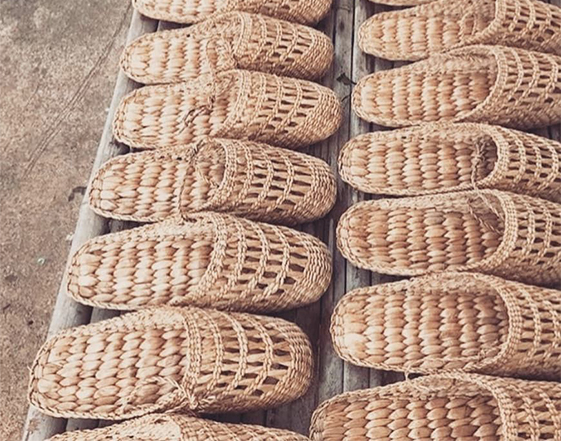Imagine living in a world where you don’t have the opportunity to wear your favorite slippers. Yes, it is. Your feet will be vulnerable to cold floors. At a glance at the driveway to the mailbox, you can imagine how pine needles and loose gravel feel. We like slippers because their sole purpose is to protect the soles of their shoes. But where did they come from? What is her back story?
Behind slippers, there is a story that traverses many linguistic interpretations of culture, continents, and what slippers are. Are they house shoes? Or is it a mule? What are they called and why are they so popular? There are answers to these questions to help you understand where your comfort comes from and why it is so important.
History
The recorded history of slippers can be traced back to the 12th century when Vietnamese wore slippers. But in the West, records can be traced back to 1478. 19 Peranakans Chinese wedding shoes in the second half of the century Slippers were worn very early in China. They were made of cotton or rush fabric, lined with leather, and adorned with symbols of power such as dragons. Native American moccasins were also very decorative. The soft feet depict natural landscapes. And are adorned with beadwork and fringes, are suitable for indoor use. The Inuit and Aleut made shoes from smoked rabbit skin to protect their feet from the frozen ground of their homes. Victorian men needed such shoes to keep dust and gravel away from their homes. For Victorian women, slippers were an opportunity to show off their needlework skills and use embroidery as a decoration.
Origin of slippers
Slippers are an old choice when it comes to comfort and versatility. Whether used as indoor shoes or formal wear, slippers continue to be used in all areas. The word “slippers” was first recorded in English in 1478. But slippers seem to have been used for a long time. Spanish cave paintings dating back over 15,000 years have been found to depict people wearing animal skins and fur on their feet. This was mistaken for improvised shoes and slippers at the time. Roman bodies have been excavated in Boscombe for the past 15 years, so if anything of interest was found, it would have been found by now. But in 2008, strange discoveries became a hot topic. The focus of the corpse excavated in 2008 was not the bitter fact of curling up with the child. But the fact that it was buried in slippers. This suggests slippers go back to 200AD. It is believed that her slippers state her high social status. As the majority of the remaining 300 bodies, there were wearing traditional boots (for their journey into the next life).
Invention
So it’s clear that slippers, or at least slipper ideas, have been around for longer than we could have imagined. Yet, it is completely unknown who invented the first slippers. A quick search online reveals that it was Alvin Slipper who invented the slippers because he was tired of his cold feet. This seems almost untrue. Others say Florence Melton invented slippers in the 1940s. While researching materials to improve the helmets of World War II crews, Melton discovered the best material for slippers. Form. The softness and washability of the material make it the perfect slipper for soldiers. As Melton himself said in 2001, “I was always thinking of meeting my needs.” The discovery of Melton led to the invention of the first washable foam sole slippers and the Dearfoams brand.
Middle East slippers
In Morocco, an important port in the Mediterranean and Atlantic Oceans, there was a “babouche”. It’s a shoe like what we know today as slippers. These easy-to-remove babouches have been popular shoes for centuries, as shoes are not allowed in the sanctuary. Morocco’s influence in the trading area may have allowed other wealthy countries, such as France, to adapt their style to their fashion.
Moroccan babouche is derived from the Arabic word “babouche” or the Persian word “babouche”. Inspired by open-back sandals, Babouche’s focus is on exaggerated pointed toes. This, along with its very soft design, is intended to reflect the fact that its wearers (often monarchs and 17th-century French courtiers) were interested in their lifestyle and appearance. I am. They lived a luxurious life, cared for gophers and drivers, and enjoyed optimal comfort while keeping their shoes in top condition. The special softness of babouche is due to the manufacturing process. It is washed and dried until it reaches its softness. You might think it’s an old-fashioned, weird look, but Babouche was featured in last year’s Vogue and was called the 2016 Must-Hub Shoe. Craftsmanship babouche slippers are still manufactured in the Marrakech market in Morocco and continue to be a cultural symbol.
Slippers in France
The French word for slipper is “mule.” These are backless heeled shoes with a closed toe. Worn as bedroom shoes, mules stepped out the door as formal wear. Some people conclude that due to the backlash to the French Revolution and the wealthy in general, there remained a fear that there could be another uprising. The elite French cut back on their fashion choices, mules being one of them. Others say that mules became the go-to dinner party shoes because it didn`t matter what shoes ladies were wearing when their large dresses covered up everything. Why wear uncomfortable shoes if nobody could see them? Towards the end of the century, slippers became less popular with the French when the upper class looked out and noticed that there were no angry commoners or rakes outside the house. Not, but slippers continue their journey to the UK.
The official discovery of Vietnam
the first actual mention of slippers in Vietnam occurs as early as the 12th century. At that time, slippers were a symbol of prisoners of war, not the simple everyday comforts we see today. It was a wealthy sultan servant who wore them because their loose fit and soft soles were a way to prevent them from escaping on rocky terrain outdoors.


